
by Kyla P'an (Portugal) | Dec 11, 2014 | 2014, Adolescence, Awareness, Being Thankful, Bilingual, Cultural Differences, Culture, Education, Eye on Culture, Friendship, Inspirational, International, Japan, Language, Life, Life Lesson, Living Abroad, Multicultural, Parenting, Relationships, Responsibility, Study Abroad, Traditions, Travel, USA, World Motherhood
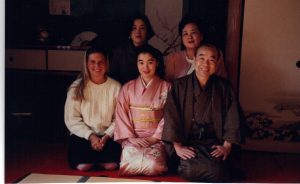
The author with her Japanese host family,
Oshogatsu (New Year’s Day), 1994
When I was eight years old, my mom moved from our home, outside of Philadelphia, Pennsylvania, to start a new life for herself in Los Angeles, California.
Growing up on the East Coast of the US, in the 1970’s, I had been exposed to only small pockets of Asian, immigrant populations; I knew nothing of the large, well-established Asian populations out on the West Coast.
On one of my first trips out to visit, my mom took me to an area of Los Angeles called Little Tokyo. As its name infers, it was a predominantly Japanese neighborhood and wandering around its streets made me feel like I had been transported to a different land.
I can’t remember if I had ever had sushi before my visit but certainly I had never experienced sushi in as authentic a setting as the restaurant she took me to that day.
The entrance involved crossing a wooden bridge over a small koi pond. There were stone lanterns and bonsai trees. the waitresses were all clad in kimono and the sushi arrived at our table on small wooden planks. I was mesmerized. For me, it was love at first…bite.
This experience had such an impact on me that, from that day on, I was enthralled by anything Japanese. I wanted to know everything I could about the country, culture and its people.
The Japanese were the great inventors of all things prominent in my childish memory: Iron Man, Godzilla, Kero-Kero Keroppi, Hello Kitty, my first Walkman. What a genius tribe they must be!
The rise of my curiosity coincided perfectly with the rise of the Japanese economy. Access to their food, products and even language grew increasingly accessible.
When I was in high school, a small group of students expressed their desire to study Japanese, a language option not yet offered at my school. Fortunately for us, since our school was less than an hour from Yale University—one of the US’s leading colleges—we petitioned for and received permission to get transportation to Yale one evening a week, so we could take an introductory-level Japanese language class there.
When I began researching colleges the following year, I selected only those with an established Japanese language program and study abroad opportunities.
I ended up at a small, liberal arts college in Tennessee with a strong International Studies department. I enrolled in every Japanese class they offered. In my sophomore year, I applied for and was accepted into my school’s Japanese exchange program with our sister university in Osaka, Japan.
At the end of my sophomore year, when all students had to declare their majors, I–along with one other student–petitioned for and was granted permission to develop the school’s first degree track in Japanese Studies. It seemed an auspicious plan, considering the Japanese purchase of the iconic, US landmark, Rockefeller Center, earlier that same year.
I spent my entire junior year of college abroad, studying at a Japanese university, living with two separate Japanese families and absorbing as much of the country and culture as possible for a college-aged kid.
I turned 21 there, a major American coming-of-age. I participated on Japanese sports teams, took painting and pottery classes, studied the culture through the fascinating lens of manga (Japanese comics), dated only Japanese men and immersed myself in the pursuit of understanding all things Japanese.
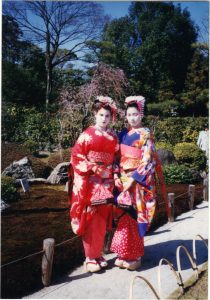
The author and her host sister dressed in kimono
My study abroad experience had an unbelievable impact on my life. It launched my passion and insatiable hunger for travel and Asia, beyond Japan.
I gained greater independence, broadened my global perspectives, forged life-long friendships, developed cultural empathy and experienced life as a minority; a gaijin (outsider) in a homogeneous land.
I consider my study abroad experience the foundation of the life I built upon it. I know that many of us here at World Moms Blog also have had experiences living and studying abroad; it is one of the many ties that bind us. We are global citizens striving to raise our own children in an increasingly globalized world.
But, as you will learn later today from World Moms Blog Founder, Jennifer Burden, here in the US, accessibility to and enthusiasm for studying abroad are not as prevalent as many of us may think.
So what’s it like in your country? Are study abroad programs prolific on your college campuses? Did you benefit from studying abroad? Tell us about what the experience means to you.
And stay tuned later today for Jen’s post on Studying Abroad and how the White House is playing a part…
This is an original post to World Moms Blog from our managing editor and mother of two rising, global citizens, Kyla P’an.
The pictures used in this post are credited to the author.
Kyla was born in suburban Philadelphia but spent most of her time growing up in New England. She took her first big, solo-trip at age 14, when she traveled to visit a friend on a small Greek island. Since then, travels have included: three months on the European rails, three years studying and working in Japan, and nine months taking the slow route back from Japan to the US when she was done. In addition to her work as Managing Editor of World Moms Network, Kyla is a freelance writer, copy editor, recovering triathlete and occasional blogger. Until recently, she and her husband resided outside of Boston, Massachusetts, where they were raising two spunky kids, two frisky cats, a snail, a fish and a snake. They now live outside of Lisbon, Portugal with two spunky teens and three frisky cats. You can read more about Kyla’s outlook on the world and parenting on her personal blogs, Growing Muses And Muses Where We Go
More Posts - Website
Follow Me:


by World Moms Blog | Dec 3, 2014 | 2014, Awareness, Being Thankful, Caring, Casting a Wider Net, Economy, Eye on Culture, Guest Post, Helping, Human Rights, Humanitarian, Inspirational, International, Marketing, Motherhood, Multicultural, Philanthropy, Poverty, Rape, Social Equality, Social Good, Social Media, Tragedy, USA, Women's Rights, World Interviews, World Tour
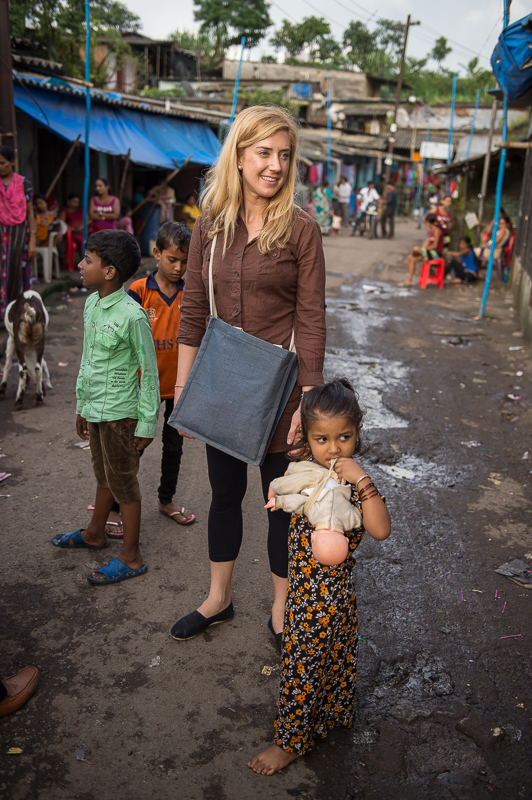
Jane Mosbacher Morris,
Founder of To the Market
What is To the Market and how did it get started?
TO THE MARKET | Survivor-made Goods (TTM) combines the powers of commerce and storytelling to empower the world’s most courageous survivor populations. We’ve developed a three-pronged social enterprise model that we believe reflects the needs of organizations employing survivors of abuse, conflict, or disease to help ensure that these organizations can continue to provide steady work to the survivors.
Our goal is that the survivors in our network eventually achieve economic independence, meaning that they aren’t dependent on someone or something else.
Our model includes (1) promoting survivor-made goods via our multiple distribution channels, including pop-up shops, custom sourcing, retail partnerships, and our online marketplace; (2) offering a platform for survivors and their champions to share their stories through TTM’s Stories and Huffington Post blogs; and (3) providing tailored services, such as trend forecasting and basic mental health resources, to our partners to improve production and management.
I started TTM after a trip to Kolkata, India revealed a way to impact the most vulnerable survivor communities by offering them an opportunity to earn an income.
I saw the light in the eyes of the survivor turned artisans when they were given the chance to earn—they wanted the dignity of work. I began speaking to incredible people all over the globe (including in the U.S.) who had created social enterprises to employ different survivor populations, usually by employing them to produce handicrafts.
I heard really positive feedback about the model of employing survivors (and all of the incredible benefits to the self-esteem and trajectory of the survivor and his or her children). However, I also heard about the challenges of making this model work—TTM aims to help augment these challenges.
Who are the artisans at To the Market?
TTM identifies and teams up with existing organizations currently employing survivors of abuse, conflict, or disease. We call these organizations “local partners”. Local partners consist of non-profits and for-profit social enterprises that have already set up shop, hired, and trained survivors to produce products.
TTM focuses on certain types of survivor populations. This includes, but is not necessarily limited to; survivors of abuse, such as survivors of domestic violence, physical and sexual abuse, and human trafficking; survivors of conflict, such as war widows, refugees, or persons living in conflict/post-conflict states ; or survivors of disease, including populations living with HIV/AIDS, leprosy, or physical disabilities.
We have partners across the globe, including in the U.S., South America, Africa, and Asia.
Do you see a pattern in consumers’ behavior when it comes to shopping responsibly?
I think there is a desire to shop more responsibly, but it often comes down to what people can afford. I am really proud of the fact that our local partners make a variety of products at all different price points—on-trend bracelets for under twenty dollars to timeless cashmere scarves for several hundred dollars.
Can you share a personal story that you think best represents the mission of the online shop?
I recently spent nearly a month in Nepal and India visiting with many of our local partners. I was particularly reminded of how transformational economic independence can be to these survivors when I spent time with their children—their daughters, especially. Most of the survivors we work with are women. When the women achieve economic independence, their daughters are so much less likely to be exploited. We recently wrote about a shelter in New Delhi, India that employs HIV/AIDs infected and affected women. You can see the video about the shelter and read about it on our Stories blog here.
How did you get involved with this work?
I began my career in counterterrorism with a focus on the intersection of women and security. Much of my mission was to try to elevate the role of women in national security-related issues, but I consistently found that women with some form of economic independence had so much more leverage in their family, community, and country than those with none.
That (five year) experience got the wheels turning quickly about the importance of economic independence in empowering vulnerable populations. When I went to work for the McCain Institute on human trafficking, I really saw how vital it was for survivors of some sort of trauma (whether it be abuse, conflict, or disease) to have access to some income.
It brings me extraordinary joy to be a part of the life-changing process of gaining even the slightest bit of independence.
What are your favorite picks for this holiday season?
- For Mom: I love this 100% cashmere scarf hand spun by master spinners in the Kashmir Valley! Each scarf contains the women’s initials that made it.
- For Dad: I love this red spice and merlot trivet. It’s the perfect size for cuff links, receipts, or coins and is neutral enough to sit comfortably on a nightstand or office desk. It’s hand-woven by craftswomen in Rwanda.
- For college kids: I have to suggest the patrice signature bag, which I am currently carrying by No41. It has two major points of impact!
- First, it provides a stable job and sustainable income to a young woman transitioning into a life of independence from living in an orphanage in Rwanda.
- SECOND (and perfect for the college student), it provides 240 meals to a secondary student in Rwanda!
- For kids: I love these brightly colored elephant ornaments (in pink or blue) hand-sewn by women in the Ivory Coast. Pink and blue patterns make it easy to pick for a boy or girl.
- For the office or book/dinner club gift exchange: I selected either a Sari Coin Purse hand-sewn by human trafficking survivors in Kolkata, India or this Hope Ornament pounded out of recycled metal oil drums in Haiti. Even if you don’t have a tree, you can hang this Hope sign up to encourage you! Both come in under $10, the perfect price point for small gifts.
- I am also including a couple “splurge on yourself “ items because I feel like most moms that I know only spend on others! I’ve included the Holiday Festive skirt, because it’s the perfect pattern for this time of year and also because it’s made by stay-at-home moms in Belize who are caring for sick children. Or, this Soledad Peru bag. The Suede straps and bottom make it strong enough to carry six wine bottles (yes, please!). The bag was made by women weavers in a valley deeply scarred by the Shining Path.
How can World Moms help spread the word about shopping responsibly this holiday season and beyond?
What a great question! Helping to get the word out about social enterprises like TO THE MARKET via social media and blogging is a tremendous help, in itself. Someone doesn’t have to have a huge following, either! Just telling your family or friends that these social enterprises exist makes a difference. So much of why so many social enterprises struggle is because they don’t have the marketing budget that big box retailers have to tell their story. There is nothing more flattering (or effective) than a personal referral!
This is an original interview with To the Market founder, Jane Mosbacher Morris, for World Moms Blog. You can learn more about the good work and great products To The Market sells by visiting their website (http://www.tothemarket.com/goods)
The image in this post is used by permission from To the Market.
World Moms Blog is an award winning website which writes from over 30 countries on the topics of motherhood, culture, human rights and social good. Over 70 international contributors share their stories from around the globe, bonded by the common thread of motherhood and wanting a better world for their children.
World Moms Blog was listed by Forbes Woman as one of the "Best 100 Websites for Women 2012 & 2013" and also called a "must read" by the NY Times Motherlode in 2013. Our Senior Editor in India, Purnima Ramakrishnan, was awarded the BlogHer International Activist Award in 2013.
More Posts

by Salma (Canada) | Aug 1, 2014 | 2014, Bilingual, Canada, Childhood, Communication, Cultural Differences, Culture, Education, Family, Homeschooling, Language, Life Lesson, Multicultural, Relationships, Religion, Salma, Traditions, World Moms Blog, World Motherhood, Younger Children
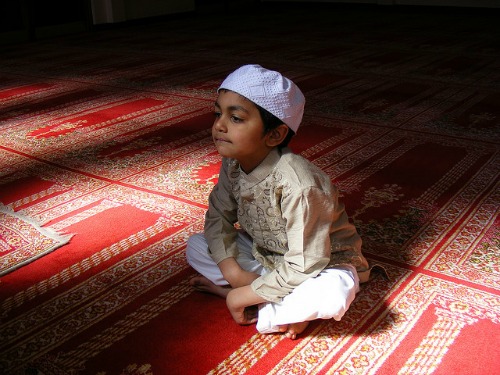 On her visit to our home last October my mother had a lot of one-on-one time with my three year old son. While I was in the hospital giving birth to my fifth child, she was asking some serious questions. In this short period of time my mother came to a serious conclusion; her grandson doesn’t know about God. (more…)
On her visit to our home last October my mother had a lot of one-on-one time with my three year old son. While I was in the hospital giving birth to my fifth child, she was asking some serious questions. In this short period of time my mother came to a serious conclusion; her grandson doesn’t know about God. (more…)

An Imperfect Stepford Wife is what Salma describes herself as because she simply cannot get it right. She loves decorating, travelling, parenting,learning, writing, reading and cooking, She also delights in all things mischievous, simply because it drives her hubby crazy.
Salma has 2 daughters and a baby boy. The death of her first son in 2009 was very difficult, however, after the birth of her Rainbow baby in 2010 (one day after her birthday) she has made a commitment to laugh more and channel the innocence of youth through her children. She has blogged about her loss, her pregnancy with Rainbow, and Islamic life.
After relocating to Alberta with her husband in 2011 she has found new challenges and rewards- like buying their first house, and finding a rewarding career.
Her roots are tied to Jamaica, while her hubby is from Yemen. Their routes, however, have led them to Egypt and Canada, which is most interesting because their lives are filled with cultural and language barriers. Even though she earned a degree in Criminology, Salma's true passion is Social Work. She truly appreciates the beauty of the human race. She writes critical essays on topics such as feminism and the law, cultural relativity and the role of women in Islam and "the veil".
Salma works full-time, however, she believes that unless the imagination of a child is nourished, it will go to waste. She follows the philosophy of un-schooling and always finds time to teach and explore with her children. From this stance, she pushes her children to be passionate about every aspect of life, and to strive to be life-long learners and teachers. You can read about her at Chasing Rainbow.
More Posts - Website

by Katinka | Jul 28, 2014 | 2014, Adoption, Adoptive Parents, Being Thankful, Belgium, Birth Parents, Childhood, Contest, Cooking, Cultural Differences, Discipline, Ethiopia, Family, Food, Health, Kids, Life Balance, Motherhood, Multicultural, Nutrition, Parenting, Siblings, World Motherhood, Younger Children
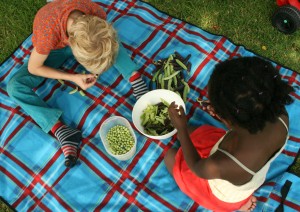 I’ve yet to meet a mom who is not monitoring her kid’s eating habits. Some might even be obsessed over it, others just make sure their kids eat enough or don’t overeat. Food can be filled with cultural, health or moral values and seems an important subject in most families I know.
I’ve yet to meet a mom who is not monitoring her kid’s eating habits. Some might even be obsessed over it, others just make sure their kids eat enough or don’t overeat. Food can be filled with cultural, health or moral values and seems an important subject in most families I know.
Every single one of the moms I know, seems to have her personal truth about food, or is at least searching for it. I know quite a few moms who vouch for strict vegetarianism, sugar free, all organic, low-carb, macrobiotic, low-fat or a mix of those. Others cook without lactose, gluten, sugar, eggs, nuts, soy and other allergy or intolerance boosters, by necessity or by conviction. But there’s also quite a number who just like to stick to their grandmothers’ favourite mashed potatoes with pork chops and piccalilli, because that’s what they were raised with.
Myself, I mix quite a bit of the above. My life is all about compromises. As a student, I used to be vegetarian, but now we eat vegetarian for only about 3 days a week. I also restrict the amount of lactose, because of my daughter’s (mild) intolerance. I make sure they eat at least one piece of fruit per day, but most days it’s two or three. And because we are Belgian, we have our two-weekly take out of ‘French’ fries, which originally came from Belgium. Or maybe even from Flanders.
I would not call myself obsessed, but I do keep a detailed mental track of what my kids eat in a day, and try to compensate by the 80/20 rule I adopted from a fellow World Mom: if they eat healthy for 80% of the time, that will make up for the 20% they eat junk.
When a mom has found her personal truth about food, obviously she wishes for her kids to eat by it; which they aren’t likely to do without a struggle. Not after they’ve tasted the Belgian fries, they won’t.
When my oldest was younger, I used to think I had it all together though. He ate whatever vegetable I gave him and his favourite dish was Brussels’ sprouts. I even recall quite some occasions on which I, the former vegetarian, bribed him into eating his meat by promising him an extra stem of broccoli. After a while, even the meat didn’t pose a problem anymore. He would eat whatever I served him.
Those good old days are over now.
It all started when our daughter arrived, age 2.5. She came from Ethiopia and was not used to our diet, not mentally, but also not physically. The first time I served her something green, she just threw it on the floor. Not out of a whim, but because she was clearly convinced it was not edible. She even tried to take it out of my mouth. Having been fed mashed dishes all her life, she was also not used to chewing. She did like bread and she did her best chewing it, but we had to take her to a physiotherapist to sooth her jaw pains. So we customized our cooking to her and introduced new stuff every once in a while. The one dish that never posed a problem was, indeed, our Belgian fries.
Meanwhile, our son, then 5, seemed to finally grasp that there was such a thing as rejecting food. I don’t know whether it was his sister’s example, the TV shows he started watching, his classmates or just normal evolution, but he started getting more selective each month. He also ate with his hands more often, just like his sister was used to. I went from having one kid with excellent eating habits to two picky, messy eaters.
After two years of convincing myself it was just a phase, this year I started implementing some strategies to get them to eat more balanced. Ultimately, what they were eating wasn’t all that bad but I was getting tired of the drama and the struggle to get them to eat what I believed was good for them. And most of all, I wanted them to develop the discipline to choose healthy by themselves, and not just because I ordered or rewarded them.
First, I tried the Yucky List. A colleague of mine had it at home, and it worked perfectly for her family. The idea is that it is only natural to have different tastes and that you don’t need to like everything. The concept is that each family member can have three dishes they really don’t like, on that list. When it is served, they are allowed to refuse it and have bread instead. Or hope for a mom who cooks two different dishes in advance. Of course over time, you can change your preferences but when a fourth dish you don’t like is served to you, you have to eat it, before you can put it on the list (replacing another).
It seemed promising but after a few weeks, the kids started to change their list about every other day. Way too many family dinners were filled with ‘I will put this on my yucky list for sure!’ and a lot of moaning and struggling, which didn’t really lighten the mood as I had hoped it would. We might pick it up again when they are older but for now, it doesn’t work for us.
After that, I changed my strategy to handing out a Yucky Coupon, Bah Bon in Dutch. I borrowed the idea from a friend who used to do cooking for youth camps. At these camps, each of the kids was given one Bah Bon for the duration of the camp. They could hand it in if they didn’t want to eat one of the meals that was cooked for them. Of course, they only could do that once. And the ones who still had the Bah Bon at the last day of camp, could hand it in, in exchange for ice cream.
So that’s how we do it now and it works like a charm! The kids both have their weekly Bah Bon, which is very conveniently posted on the magnetic wall next to the dinner table. Whenever they complain about dinner (or lunch or breakfast), we just point to their Bah Bon and remind them they can hand it in if they wish. No strict words, just giving them a choice and a visual reminder. Our son hasn’t missed his Sunday ice cream once. Our daughter has, once, and she’s not likely to miss another.
Of course, this will only work if ice cream is really a treat for your kids. Mine don’t really get candy or other sweets that often, so for them this works perfectly.
And of course, it’s still kind of a bribe. But I like it much more than the daily ‘If you don’t eat it, you can’t have desert’ bribe. For one, because we don’t have desert every day. Second, because they have to manage the discipline to work all week for their ice cream, rather than getting an instant reward. Third, because I don’t exactly sell the ice cream as a bribe or reward but rather as an interpretation of the 80/20 rule: if they eat healthy and balanced all week, it is all right to have something unhealthy every once in a while.
Most importantly, I like this system because the kids themselves really like this system. They like being in control of what they (don’t) eat without any pressure from us, and most of all they absolutely love our weekly ceremony when they officially hand in the Bah Bon they saved in exchange for their well deserved treat.
Do you have a personal or cultural take on the food you serve your kids? And do you need similar strategies to convince them about it?
This is an original post to World Moms Blog by K10K from The Penguin and The Panther.
The picture in this post is credited to the author.
If you ask her about her daytime job, Katinka will tell you all about the challenge of studying the fate of radioactive substances in the deep subsurface. Her most demanding and rewarding job however is raising four kids together with five other parents, each with their own quirks, wishes and (dis)abilities. As parenting and especially co-parenting involves a lot of letting go, she finds herself singing the theme song to Frozen over and over again, even when the kids are not even there...
More Posts

by Karyn Wills | Jun 23, 2014 | 2014, Awareness, Being Thankful, Brothers, Childhood, Culture, Education, Eye on Culture, Kids, Multicultural, Music, Nature, New Zealand, School, Siblings, Traditions, World Motherhood
 It’s mid-winter in New Zealand. The air is crisper than I’ve felt it for a while, the leaves have pretty much fallen and we have had the shortest day of the year.
It’s mid-winter in New Zealand. The air is crisper than I’ve felt it for a while, the leaves have pretty much fallen and we have had the shortest day of the year.
This week also saw the appearance of the star cluster, Matariki, (The Pleiades), which heralds the Maori New Year.
This was not a festival I had ever heard of growing up but it has been revised and reinstated and there are now celebrations being held all around New Zealand. While different tribes traditionally celebrated Matariki in their own fashion, now it is universally marked by the new moon and rising of the Matariki star cluster with festivities running from 1st June to 30th July.
Traditionally, Matariki was a time of celebration, important for navigation and the timing of the seasons. It was particularly relevant to the preparation of the ground for the upcoming growing season and offerings to the gods, and specifically, Rongo, the Maori god of cultivated food.
Only a few New Zealand schools consistently mark mid-winter and Matariki but for our boys’ school, festivals are an important part of the culture and I have two mid-winter events to attend this coming week.
On Wednesday evening, my youngest son has a lantern walk through a public garden. Imagine a waterfall and a large pond with a bridge over it and a stream running throughout. Imagine 30 or so small (3-6 year-old) children clutching a paper lantern with a candle in one hand and a parent’s hand in the other as we meander through the park in, otherwise, pitch black. We will wander past tiny grottos of handmade gnomes and crystals, we will attempt to sing (although for the children, it’s enough that they manage to walk and stay upright!) and we finish gathered together, munching on a star shaped, ginger or shortbread biscuit.
On Thursday evening, my older sons have their mid-winter festival, beginning with a shadow play performed by their teachers. After the play, the children who are between 10 and 14 gather in small groups amongst the trees at school and the youngest children, guided by their lanterns and teachers, meander from group to group and hear the older children entertain them with a song, or a poem or a tune. The 10 year-olds then follow behind the youngest to see the older children’s performances and the 11 year-olds follow them, and so on. They will finish with their classmates and a biscuit and warm drink.
The magic in these events is heart-warming and the children just seem to absorb the atmosphere; they appreciate the small snippets of light amongst the darkness, the companionship, the quiet musicality of the ’entertainment’ and especially the sharing of food at the end! (So do I.)
Do you celebrate mid-summer and mid-winter? How do schools where you live mark these seasonal events?
Sources: NZ Ministry of Culture and Heritage; Wikipedia
This is an original post to World Moms Blog by our writer and mother of three boys in New Zealand, Karyn Van Der Zwet.
The image used in this post is credited to Wikipedia images with editing from Dayne Laird (Ministry for Culture and Heritage, NZ)
Karyn is a teacher, writer and solo mother to three sons. She lives in the sunny wine region of Hawke’s Bay, New Zealand in the city of Napier.
More Posts
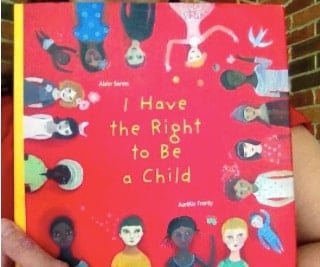
by Cindy Levin | Jun 10, 2014 | 2014, Childhood, Human Rights, Humanitarian, International, Kids, Multicultural, Social Equality, Social Good, United Nations, World Voice

I’ve recently introduced a picture book into my family’s reading time called “I Have the Right to Be a Child” by Alain Serres. With beautiful simplicity, the book provides the author’s interpretation of the United Nations Convention on the Rights of the Child. The Convention includes things like rights to education, gender equality, nutrition, health care, free speech, freedom from child labor, safety, etc. For kids, the book is a conversation starter about human rights. We talked a lot about the question, “What are rights and what are privileges?” For adults, the book is a reminder that these concepts really are not that complicated. It may be complicated in the implementation of granting rights, but when the rights themselves are asserted in the simple language of the children the Convention seeks to protect, it all becomes much more clear.

This is probably the first time my kids saw human rights presented in a way that was meaningful to them. In American museums and text books, the right to vote for women and people of color seems faraway and a “done deal.” They don’t think of those rights as things we continually need to address here and in other countries. My children often help me advocate to give children in developing countries access to school and vaccines, but the language of “rights” isn’t always included in those kinds of discussions.
My youngest really latched on to the page that said,
“I have the right to express myself completely freely, even if it doesn’t always please my dad, and to say exactly how I feel, even if it doesn’t always please my mom.”
We have a lively ongoing debate about how that plays out. If she has the right to express herself completely freely, how might that compete with my perceived right not to be disrespected in my own home or the rights of her other friends and family members?
It might be surprising to Americans to learn that while 194 states in the world have agreed to the Convention, the U.S. has not officially ratified it. In fact, every member of the United Nations except Somalia, the United States, and South Sudan are party to the Convention, having agreed to change or make laws and to develop practices and programs to support it. The U.S. has signed to show support, but hasn’t “ratified” it. Ratification requires being bound by international law and having to report regularly to the UN Committee on the Rights of the Child, which monitors compliance.
Why hasn’t the U.S. ratified? Katie Jay – author of the “Children Deserve Families” blog told me that recognizing that children have a right to a safe and secure permanent family is cutting edge human rights law. The idealistic part of me scoffs at that, saying;
“Really? Cutting edge? To provide security, safety, and nourishment to children is cutting edge?” But the lobbyist part of me knows that it can sometimes be a tricky thing for a country to formally declare something as a “human right.”
Because once you officially do that, then you have to do something about it…or be held accountable by an international authority and possibly give up your moral high ground if you are then seen as a country that doesn’t live up to its own standards. Sadly, from the standpoint of an American citizen who has watched our behavior on international environmental agreements with dismay, I can tell you that Americans generally don’t like the idea of international authority holding us accountable for just about anything.
Has your country ratified the Convention? Take a look at this paraphrased list of rights for children from the book and consider which of them you think are rights or privileges. Are all of them rights? What would be the ramifications for your country to truly grant that right in your country? Internationally? What benefits or problems do you see that could arise if the world embraced the Convention wholeheartedly?
- I have the right to a first name, a last name, a family, and a country that I can call my home.
- I have the right to have enough food to eat and water to drink.
- I have the right to live under a roof, to be warm, but not too hot, not to be poor and to have just enough of what I need, not more.
- I have the right to be cured with the best medicines that were ever invented.
- I have the right to go to school without having to pay.
- I have the same rights whether I am a girl or a boy.
- I have exactly the same right to be respected whether I am black or white, small or big, rich or poor, born here or somewhere else.
- I have the right to be helped by my parents, my friends, and my country if my body doesn’t work as well as other children’s.
- I have the right to be free from any kind of violence, and no one has the right to take advantage of me because I am a child.
- I have the right to go to school and refuse to go to work.
- I have the right to be protected by adults and to be sheltered from disasters
- I have the right never to experience war or weapons.
- I have the right to breathe clean air.
- I have the right to play, to create, to imagine, and also to have friends.
- I have the right to learn about friendship, peace and respect for our planet.
- I have the right to express myself completely freely.
This is an original post written for World Moms Blog by Cindy Levin.
Cynthia Changyit Levin is a mother, advocate, speaker, and author of the upcoming book “From Changing Diapers to Changing the World: Why Moms Make Great Advocates and How to Get Started.” A rare breed of non-partisan activist who works across a variety of issues, she coaches volunteers of all ages to build productive relationships with members of Congress. She advocated side-by-side with her two children from their toddler to teen years and crafted a new approach to advocacy based upon her strengths as a mother. Cynthia’s writing and work have appeared in The New York Times, The Financial Times, the Washington Post, and many other national and regional publications. She received the 2021 Cameron Duncan Media Award from RESULTS Educational Fund for her citizen journalism on poverty issues. When she’s not changing the world, Cynthia is usually curled up reading sci-fi/fantasy novels or comic books in which someone else is saving the world.
More Posts - Website
Follow Me:









 On her visit to our home last October my mother had a lot of one-on-one time with my three year old son. While I was in the hospital giving birth to my fifth child, she was asking some serious questions. In this short period of time my mother came to a serious conclusion; her grandson doesn’t know about God.
On her visit to our home last October my mother had a lot of one-on-one time with my three year old son. While I was in the hospital giving birth to my fifth child, she was asking some serious questions. In this short period of time my mother came to a serious conclusion; her grandson doesn’t know about God. 







